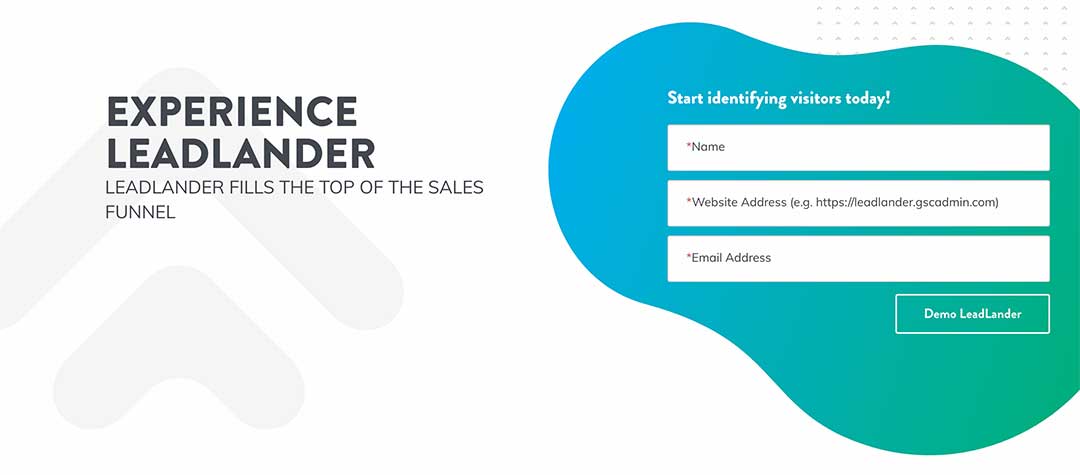Lead generation is one of the most challenging aspects of the sales process. It’s cited as the most challenging part of the job by more than 40% of salespeople. That’s why it’s important to leverage what you have and integrate new sales leads into your plan.
But doing that is impossible without a great sales plan. Consider this your blueprint to turning a prospect into a paying client. The better your sales plan, the likelier you are to reach conversion goals.
That begs a couple of questions: What does a successful sales plan look like? How exactly might you use it to turn sales leads into paying customers? Keep reading to learn about how to start integrating new sales leads into your company’s sales plan.
What Is A Sales Plan? Why Do They Matter?
Success rarely occurs by accident. Achieving your goals requires dedication, diligence, and a great plan above all else. That’s what a sales plan is – a blueprint that will tell you what you hope to achieve for the year and the steps you need to take to get there.
But a successful sales plan can’t be a generic one. It needs to include detailed, step-by-step instructions that take both historical and projected future data into account. For example, when creating your plan, you’ll need to consider who your customers are, market-specific sales concerns, generating new sales leads, and the sales process itself.
Think of your sales plan as a sort of guide. It tells you where you need to be each month to stay on track for your yearly targets and what you need to do with each new lead to ensure that happens.
Once you’ve created your sales plan, you can easily integrate new leads by tapping into the research you’ve already done. Creating a strong sales plan will help you convert leads at a higher rate and with less effort on your part. Read on for additional information on how to achieve this in the sections below.
The Importance Of Sales Forecasting And Goal Setting
Setting realistic sales goals is an essential part of creating an effective sales plan. The yearly target you pick should be a challenge to reach, but not so much of a challenge as to be nearly impossible to achieve. By finding this middle ground, you’ll give yourself something to work towards without feeling like success is hopeless.
That means you need to avoid things like:
● Wishful thinking — setting too high of a target in the blind hope that you’ll find a way to get there
● Moving the goalposts — setting a goal but then changing it as the year progresses
● Failing to consult with others — a supervisor or another sales team member should help you determine whether your targets are good ones
The targets you set will become the backbone of your plan – so make sure they’re realistic yet lofty.

Market And Customer Research Are Essential
Now that you know what your goals are, it’s time to figure out how you’re going to reach them. The best way to do that is by researching your market and your customers.
As you research, you should be looking for a niche area you can occupy to stand out from others in your industry. To do this, you’ll need to ask yourself questions such as:
● How big is my market?
● What demand exists for the product I’m selling?
● What are the strengths and weaknesses of my competitors?
● What’s my current position in the market?
Next, you need to determine who your customer is and what their purchasing might look like. You should be thinking about questions like:
● What does my target customer care about?
● What features matter most to them?
● What does their budget for my product look like?
● How can I solve their problems?
Once you’re able to answer these questions, you’ll be well on your way to solidifying your sales plan.
Finding Sales Leads
At this stage, you should understand your niche in the market, your target customer, and your goals for the year. Once you’ve got that information settled, it’s time to begin putting your plan into action by pursuing new sales leads.
There are numerous ways to go about tracking down new leads. Here’s an overview of some of the most effective methods.
Research online to start
The internet is an excellent resource for the sales process. Successful salespeople use their target customer profile to track down real-world companies that it applies to. They look for corporations that would benefit from purchasing their product. The easiest way to do this is by searching for matching companies online.
There are several ways to begin searching for companies that align with your goals. But the best online research includes information gleaned from:
● Facebook Insights (their free in-house analytics tool)
● LinkedIn searches for corporations in your area that operate in the niche you hope to occupy
● Basic Google searches targeting specific keywords you’ve identified through your target customer profile
● Information gleaned from relevant local business networks, which you can find at your local Chamber of Commerce
● Member lists of relevant online groups, such as industry blogs and forums, Quora, and business journals focusing on your niche
Leverage existing relationships
Existing clients can be another excellent resource for your lead generation process. For example, some industry experts estimate that software companies get about 80% of their next customers from recommendations and word-of-mouth advertising.
The best way to do this is by building and maintaining strong relationships with your existing clientele. You shouldn’t ignore them after completing the sales process. Instead, keep up the relationship by checking in periodically to see if your solution is continuing to meet their needs.
When you have a good relationship with your clients, they may begin recommending your service to others independently. But you can also ask them to do this for you, especially if you know that they have an existing relationship with a new company that you’re targeting through your sales plan.
Connect with strategic partners
There’s a good chance that the companies you pitch to have many things in common with one another. They likely partner with other individuals, organizations, or companies that target the same clients you do without being your competitor.
These are sometimes called complementary service providers. They make fantastic partners because they pitch to the same clients without interfering with your sales process.
Consider forming a mutually beneficial relationship with complementary service providers in your industry. Sharing leads and referrals with one of these companies can be an excellent way to generate new leads and boost your sales numbers.
Integrate new sales leads into your sales plan
Once you’ve found a new sales lead, it’s time to bring them into your sales plan. You can use the work you’ve done while creating your plan to facilitate a smooth conversion process.
Think back to the ideal client profile you created. What does your target client want? What are their pain points? How can you solve them?
If you’ve done the work needed to answer these questions before finding a new lead, you’ll find it much easier to deliver a targeted pitch to them. Simply take what you know from your target client profile and apply it to the specific case of the new lead that you’re targeting.
This is why creating a sales plan that you can fall back on is so valuable. Doing so can significantly reduce the amount of work you need to do to turn each new sales lead you have into a paying customer.

Optimize Your Process
The lead generation process is a multi-faceted one. There are various ways for you to go about finding new customers for your products or services. But one opportunity that you shouldn’t ignore is your website.
Your company’s website is where prospective clients will go when they want to learn more about your offerings. On average, B2B researchers will complete 12 internet searches before engaging on a specific brand’s site. That means when a company does engage on your site, they’ll be seriously interested in what you have to offer.
If you can identify which companies are visiting your website, you’ll have a highly valuable source of sales leads that you can then easily integrate into your broader sales plan.
Our solution
LeadLander makes it incredibly easy to do this. Our tools are designed to help you win more customers faster, with less effort than other lead generation methods. It’s a platform with a powerful, intuitive dashboard that’s packed with information about who’s visiting your website.
Our tool will tell you which companies are visiting your site the most, which pages they’re visiting, and even how long they’re spending on your website. With this information, you can gain an in-depth understanding of who your leads are and what they care the most about before you even reach out to them.
So if you’re serious about turning your website into a powerful lead generation tool, then why not try LeadLander? Currently, we’re offering a free 14-day trial that you can sign up for without even having to input your credit card information.
Visit us online today to get started and to experience the LeadLander difference for yourself.

